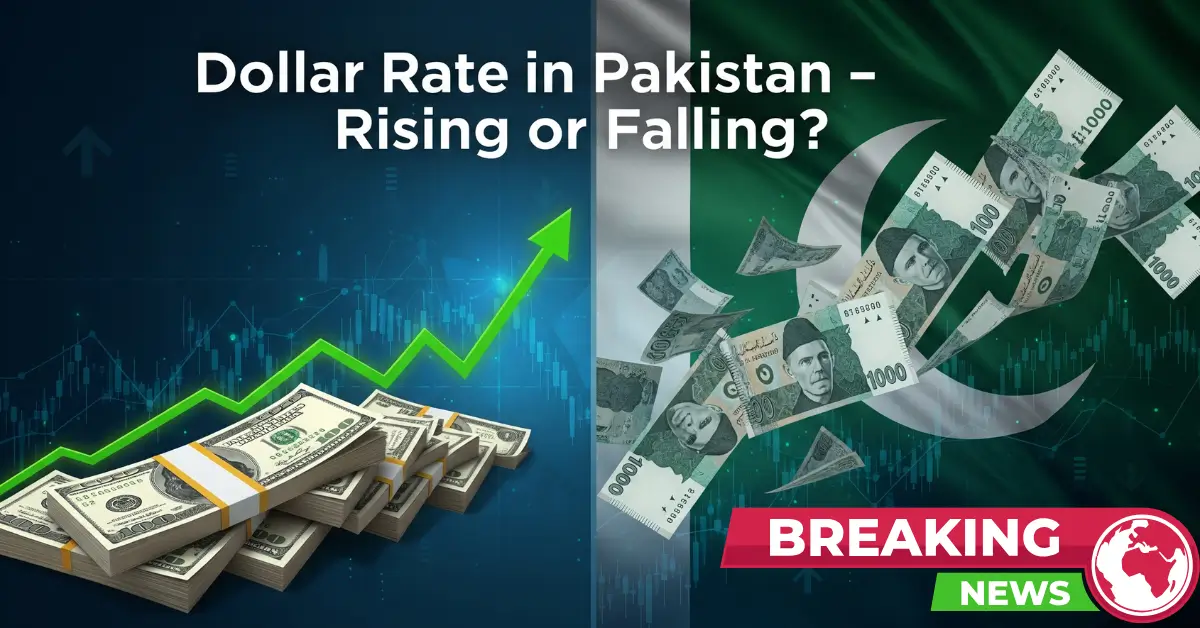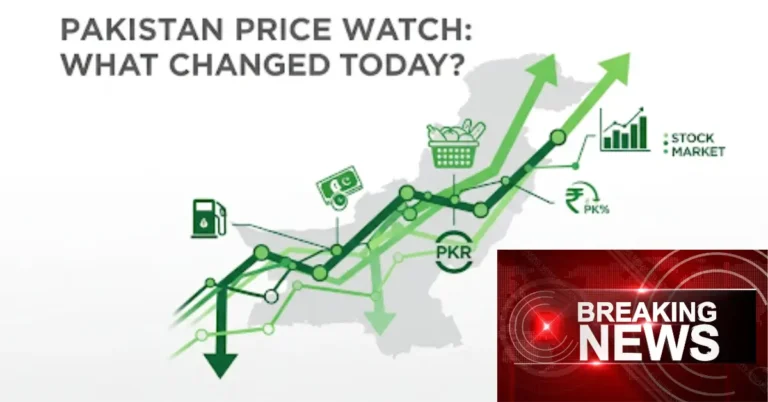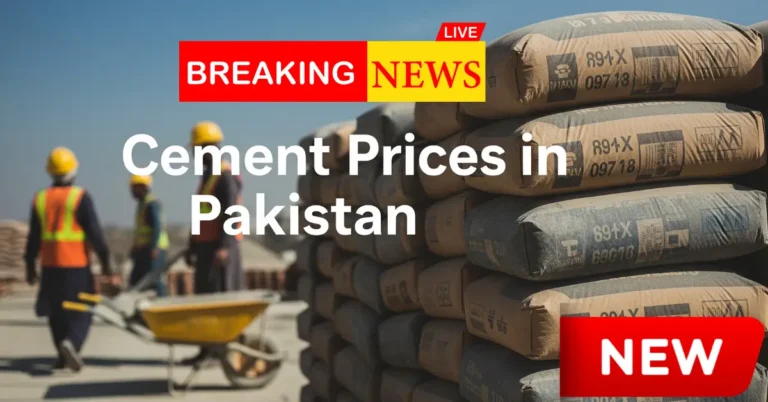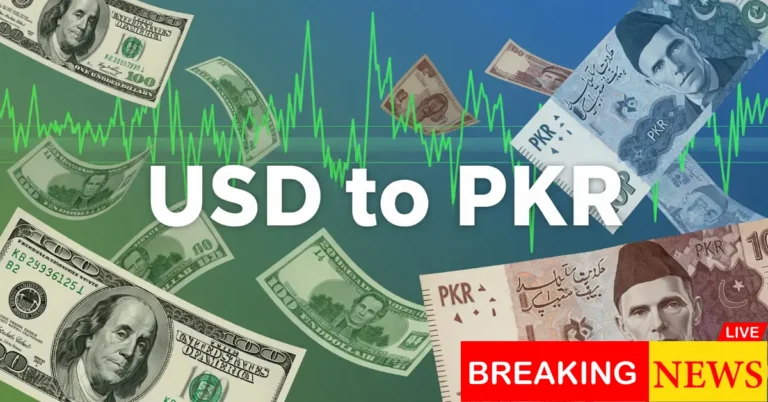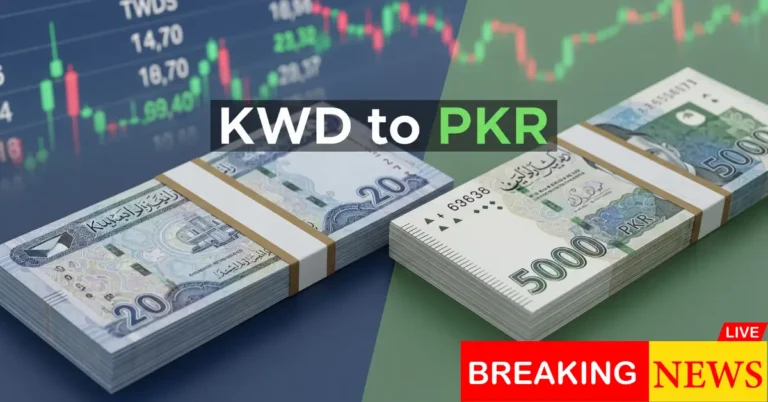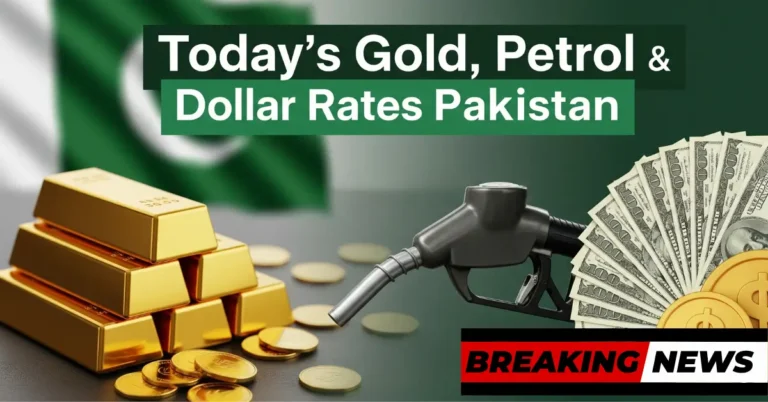The Dollar Rate in Pakistan affects far more than just currency traders. It impacts everything from the price of fuel to the cost of imported food, the tuition fees of overseas students, and even the margins of local businesses. Whether you’re sending money abroad, planning a trip, or simply trying to budget your monthly expenses, keeping an eye on how the rupee is performing against the dollar is essential.
Today’s currency market paints a picture of modest change. The rupee is holding ground with no major signs of either a sharp rise or fall. But to understand whether the currency is truly gaining strength or merely stable, it helps to look beneath the surface. What is driving the current performance, and what could influence it in the weeks to come?
 Also read
Also read
Understanding Interbank and Open Market Rates
When discussing the Dollar Rate in Pakistan, it’s important to distinguish between the interbank rate and the open market rate. The interbank rate is used by financial institutions and typically has lower margins. In contrast, the open market rate is what individual customers experience when they buy or sell currency through exchange dealers. These rates may vary slightly due to market demand and dealer markup.
 Also read
Also read
Recent Performance of the Dollar Against the Rupee
The Pakistani rupee has shown minor fluctuations in recent weeks, moving between small gains and losses. Compared to the previous month, the rupee has appreciated very slightly, suggesting more stability than strength.
| Week | Average Rate (PKR per USD) |
|---|---|
| This Week | 282.50 |
| Last Week | 282.70 |
| Two Weeks Ago | 283.10 |
| One Month Ago | 283.80 |
While these numbers don’t reflect a dramatic recovery, they do point to a more stable Dollar Rate a welcome sign for businesses and consumers alike.
 Also read
Also read
Influencers on Today’s Exchange Rate
The exchange rate is shaped by a variety of domestic and international factors. In Pakistan’s case, the most influential include the trade deficit, external debt obligations, and remittance flows. A higher demand for the dollar, especially when imports outweigh exports, tends to push the Dollar Rate upward.
Inflation also plays a critical role. As prices rise within the country, the value of the rupee declines in real terms. Political stability and investor confidence are two additional variables that affect foreign currency inflows and, in turn, the exchange rate.
 Also read
Also read
Is the Rupee Gaining Strength or Just Stable?
Today’s rates reflect a moment of relative calm rather than real growth in the rupee’s value. A rupee gaining strength would show consistent downward movement in the Dollar Rate in Pakistan—meaning fewer rupees would be required to buy one dollar. While recent weeks show slight improvement, it’s too early to label this a strong rebound.
What we’re likely seeing is the result of cautious optimism in the market, possibly due to temporary measures like debt rollovers or remittance spikes. For long-term appreciation, the country needs deeper structural economic improvements.
Why It Matters to Every Pakistani
Most people may not trade currencies directly, but the Dollar Rate affects everyday life. From petrol prices to the cost of mobile phones, many goods are imported and priced in dollars. A weaker rupee makes imports more expensive, pushing up inflation across the board.
Exporters, on the other hand, often benefit from a weaker rupee because their goods become cheaper on international markets. Students, overseas travelers, and freelancers receiving payments in foreign currency also keep a close eye on the exchange rate for obvious financial reasons.
 Also read
Also read
How to Manage Your Currency Decisions Smartly
| Tip | Benefit |
|---|---|
| Watch daily trends | Plan conversions during dips in the dollar rate |
| Use digital payment platforms | Often offer better rates than cash dealers |
| Compare interbank vs open market | Choose based on volume and urgency |
| Avoid panic buying or selling | Let the market settle before big decisions |
Smart currency decisions begin with knowledge. Even small shifts in the Dollar Rate can lead to savings or losses, especially when transferring large sums or planning expenses abroad.
 Also read
Also read
Conclusion
In summary, the Dollar Rate in Pakistan today reflects a stable rupee, not a rising one. While minor gains have been observed over recent weeks, they are not substantial enough to signal a strong reversal. What the rupee does next will largely depend on economic reforms, global financial pressures, and how well Pakistan manages its foreign reserves and trade balance. For now, the market is calm—but in the world of currency, calm is always temporary.
 Also read
Also read
